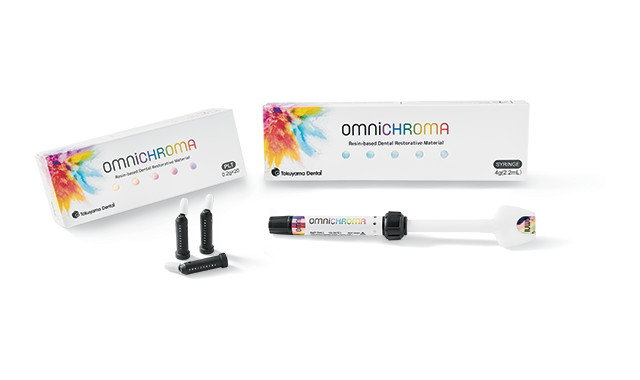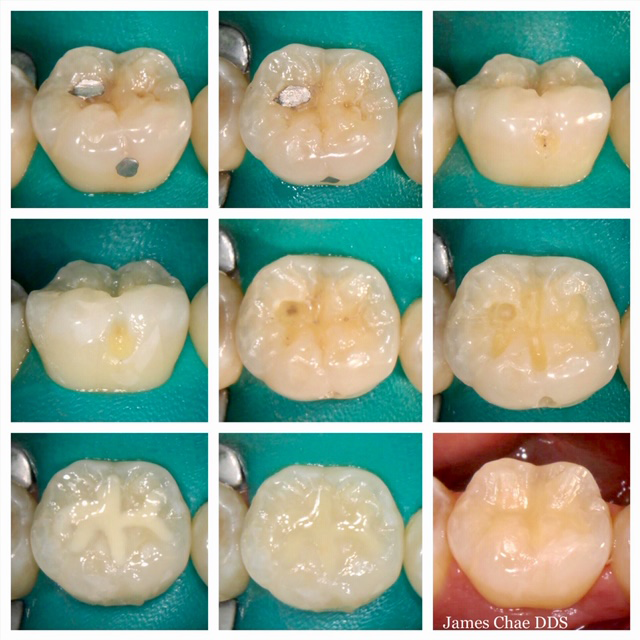How to match challenging shades of tooth color with OMNICHROMA
Learn how one dentist used this new resin composite to achieve superior results.

James Chae, DDS, has been using Tokuyama Dental America products and composites within his practice for more than half of his 19-year career, so when he got his hands on OMNICHROMA, Tokuyama Dental’s newest resin composite featuring revolutionary shade-matching technology, he was thrilled to try it out before its official launch. He also jumped at the opportunity to provide feedback to a company whose products he’s stood by for almost a decade.
Dr. Chae has been practicing dentistry since he graduated from the University of California San Francisco School of Dentistry in 2000. Currently he practices general and cosmetic dentistry and owns his own private practice, Diamond Bar Dental Group, in Diamond Bar, California. He takes pride in his work and says he strives to ensure that the services he and his team provide are nothing short of excellent. He cares so much about the oral health of his patients and the general public that he shares his work on social media, where he makes himself available to answer the questions of more than 28,000 followers on Instagram alone.
When and how did you first hear about OMNICHROMA?
I started using OMNICHROMA in June 2018, eight months before it was made available to the general public. Prior to that, I had been using Tokuyama Dental America products for the past nine years. Tokuyama Dental America reached out and provided me with the OMNICHROMA composite to try out and give my opinion and testimonial. It was a great honor as well as a nice surprise to see how this composite blends well to the tooth.
Why did you choose OMNICHROMA for this patient case?
This particular patient’s tooth was very yellow in shade. It would be harder to match the shade with another composite. Knowing this, I wanted to see how well OMNICHROMA could change and match the shade after light curing and how well it would blend to the tooth.
How did OMNICHROMA help you to achieve a better clinical outcome?

OMNICHROMA doesn’t stick to hand instruments. It has a good working time, and it’s not too soft and not too hard. The material can be easily placed on the cavity preparation with relatively small pits and grooves and sculpted with hand instruments. Furthermore, it’s easily finished and polished, resulting in a final restoration that looks very natural. However, the most important property of OMNICHROMA is the shade-matching ability after light curing.
Did you use any specific techniques in this case to help achieve superior results?
I didn’t use any specific special technique to achieve superior results in this case. However, one technique that I did use for my composite restorations was to make a wide bevel on the cavity prep, create a clean and neat cavity prep, and ensure that all the cavity prepared surfaces were filled with the paste.
Do you have any tips or tricks for other doctors using OMNICHROMA?
One tip I would recommend would be to always make a clean and neat cavity preparation without leaving any superficial caries or stains that could interfere with OMNICHROMA’s shade-matching ability. OMNICHROMA BLOCKER is a supplementary material that can also help mask slight staining. Another tip would be to make sure to make a wide bevel on the enamel surface so that the composite can blend well to the existing enamel and dentin.
How satisfied was the patient with the restoration?
The patient was very happy with the results. As I do with each of my patients, I showed them their before and after photos of the case.
How does OMNICHROMA compare to similar products in a case like this?
OMNICHROMA is unique in that it blends well with any tooth shade-even shades that are challenging to match-but working with the product itself is similar to working with other composites, so there’s no need for anything extra or abnormal.
Do you feel OMNICHROMA is a valuable tool to have at your disposal for a case like this? If so, why?
OMNICHROMA is a very valuable tool to have due to its ability to match very challenging shades of tooth color. Having OMNICHROMA at our disposal makes restorations much less stressful for dentists when we’re trying to produce a final restoration that blends well to the tooth and make it look as natural as possible.
What was your experience with other Tokuyama Dental America products prior to using OMNICHROMA?
I’ve been using other, similar Tokuyama Dental America products for the past nine years, such as Estelite Sigma Quick and Bond Force. I’ve also used Tokuyama Universal Bond for the last year. Even more recently, I began using Estelite Universal Flow. All these products have enabled me to create great restorations that look very natural. Tokuyama Dental America products have allowed me to provide high-quality, natural-looking and long-lasting restorations for my patients. Honestly, I think Tokuyama Dental America products have made me a better clinician. As a result, I’m more confident to share my work on social media and to other dentists. I would highly recommend Tokuyama Dental America products to other dental professionals.